Key to the Orders of Insects:- Insect Identification Key
Key to the orders of insects:- adapted from Harold Oldroyd 1958.
First a few words about keys. According to the Magazine “Science Teacher” “Understanding dichotomous keys as a means of classification enables students to better comprehend large amounts of information and understand how to organize, compare and contrast, and analyze that information.”
Keys work by a process of elimination, gradually narrowing down the number of possibilities.
It is important to understand that a key is much more trustworthy in proving that your insect is not A, than in proving that it is B. It might, for instance, actually be C, a species not mentioned in the key.
A key does not prove anything positive, it only suggests possibilities. People used to be faddy about the sort of key they liked, but these days the arrangement that has the greatest acceptability for simplicity and directness is the dichotomous key, so-called because at each step it asks you to choose between two alternatives. Thus:
- 1a….. Two pairs of membranous wings…………………………………….2
- 1b……Only one pair of membranous wings,
- the other pair being either hardened into wing-cases, or absent ………292
- 2a …..Fore-wings and hind-wings alike……………………………………..3
- 2b…….Fore-wings and hind-wings different………………………………..I83………..(and so on).
If the insect agrees with the first alternative of couplet 1, then you proceed to couplet 2; if the first alternative of couplet one is wrong then read the second alternative, if this is correct, then you proceed past all the intervening couplets, and read on at couplet 29 as indicated. Go on like this until you come to a final choice where you will be offered a probable identification:
i.e.
- 35a…. Abdomen with forceps……………………. Earwigs (Dermaptera)
- 35b…..Abdomen without forceps…………………. Beetles (Coleoptera)
If you are lucky this will give a correct identification, but it may not. Using keys appears difficult at first but it becomes easier the more you practice and is quite rewarding. A good way to understand keys better is to make your own. Remember that the details mentioned in the key are not the real reasons why we believe an insect is any particular species: they are only pointers towards something we can recognise.
The real identification is made by comparing the specimen with another specimen that is already named, or with a drawing, or with a good, detailed description. however many modern keys contain, or are appended by a sufficiently good description to allow for competent identification.
People commonly make one of two mistakes in using keys. The first is to be over-cautious, taking every word literally, and refusing to go on if the specimen does not agree exactly. Remember that insects, like humans, have their individual variations. Think of making a key that tried to classify the people present at one moment at Waterloo Station, and group them into rigid categories, without any margin of error. If you come to a point in a key at which you cannot decide which of the two alternatives fits the specimen, do not give up.
Consider first if it definitely fits neither: for example, if both alternatives talk about wing-structure, and your specimen has no wings, then the likelihood is that you have reached a wrong part of the key; or else your specimen is an exceptional one that the key does not properly provide for. If, on the other hand, either alternative could be considered to fit, try each one in turn and see how you get on. If the key is a good one you will usually find that on one of the two paths you quickly gain confidence again. Here again, experience of the group will help you to know which characters mentioned are likely to be clear-cut, and which you would expect to find very variable.
Making Your Own Identification Key
Generally speaking, the most difficult part of a key to construct is the beginning, separating the bigger groups. Obviously, the bigger the group, the greater the variation that is likely to be found in it, and the more exceptions there will be to any definite statement that one may make about the group. Consequently, when an insect is being identified by means of a key, the first two or three steps are likely to be the most uncertain.
Fortunately, experience redresses the balance, because after a little practice you will know at sight more or less where the specimen belongs, and will need to use only the last few couplets, where the differences are more definite. The second fault in using keys is to trust them too implicitly, to run down the specimen rather casually, and then to label it and put it away in a collection without checking it further. Many errors have arisen through this practice, especially when the misidentification has been published. Do remember that the key does not identify the specimen: it only gives a hint of what it might be. The correct attitude to keys–at least to keys made by other people–is to be skeptical without being defeatist.
The best keys are often our own because when we read a couplet in a key we ourselves wrote, we have the advantage of a great many mental impressions that are not mentioned in the couplet, and which are not available, of course, to anyone else. That is why so often the only person who can use a particular key successfully is the author.
The arrangement of couplets illustrated above is the most common, and to my mind incomparably the best one. The advantage of having the two alternatives side by side, so that you can weigh up your specimen against each of them, far outweighs the benefits claimed for other arrangements. Many entomologists, particularly those of an older generation, prefer the following style:
01. (I6) Two pairs of membranous wings ...
02. ( 9) Fore- and hind-wings alike ... ...
03. ( 7) . . .
09. ( 2) Fore-wings different from hind-wings
I6. ( I) Only one pair of membranous wings...
. . . (and so on)
If 1. is correct you proceed to 2. but if it is incorrect you proceed to16 to read what would have been the second alternative in a dichotomous key.
This kind of key is often significantly called a ‘Table’, and is said to show the grouping of the insects better, while the numbers in brackets, referring to the other half of each couplet, make it easier to trace a way through the key, both forwards and backwards. Bracketed numbers can, of course, be used in the other type of key to help in retracing one’s way. The need to turn over, sometimes, many pages to find the alternative character in a ‘Table’ of this kind, makes the operation into too much of a hurdle race.
Beware of keys in which more than two alternatives are presented at one time, especially if the author does not bother to indicate this very clearly. This is bad practice, because it defeats the first object of the dichotomous key, which is to proceed by a series of clear choices between simple and mutually exclusive alternatives. Occasionally, it is true, the insects fall naturally into three or more co-equal groups: e.g. if the legs can be red, or black, or yellow. But such a choice can nearly always be set out in couplets with a little more trouble, and the slightly greater printing space is more than compensated for by the assistance it gives the reader.
Another thing to look out for in keys–and to avoid in your own–is ‘leapfrogging’, like this:
- 40. Femora greatly swollen…………………………..
- 41 Femora slender……………………………………….72
- 4I. Femora with spines beneath…………………….71
- No ventral spines on femora…………………………85
- 42. Eyes hairy ……………………………………………48
- Eyes bare…………………………………………………..43
Of course, if you read this carefully, you will have no trouble, but keys are meant to give help in quick identification, and you should always try to keep to the logical order. Remember keys should be designed to be used by someone with no previous experience of the species or groups involved. The construction of keys is a very searching test, not only of how much you really know about a group of insects, but also of whether your knowledge has been assimilated by a tidy and logical mind. When an author publishes a complicated and disorderly key, you will find that the rest of his work shows evidence of a chaotic and turbulent state of mind.
Constructing and Adapting Keys
For all that we have just said, do not think that making keys is only for the professional entomologist. If you have studied a group of insects, it is well worth while to make a key to them, for your own use, even if you have no idea of publishing it. It is even more useful to be able to modify an existing key and adapt it to your needs: for example, to take a key to the European genera and species of a family and to abstract from it those which occur in Britain; or to combine two or more short keys into one that is more comprehensive.
You may need to do this if you do not own the books concerned, but have to borrow them from a library, and return them after a limited time. Then you can pick out just the parts you need, without having to copy out a great deal that is of no value to you. For all key-making, I suggest you use a system based upon a card-index, using standard cards 5 X 3 in.
Suppose we begin by copying a short key from a volume borrowed from a library. Write each couplet on a separate card, and stack the cards in a filing cabinet, or in one of the small portable index-boxes (called, for some mysterious reason, a ‘trial outfit’); or at worst, hold the cards together with a rubber band. Then if you want to add more names to the key, run each one down as far as it will go, and add another card at that point, using a decimal system of numbering, thus:
The use of cards avoids all the crossing out, cutting-up and pasting together that is needed if you copy the original key on to sheets of paper. Such a card-key can be expanded indefinitely, each time just for the labor of adding a new card, an making a small alteration to the previous one (for this reason it is often better to write in pencil rather than in pen). To put a card between 21.5 and 22 you may number it 21.6; if you need one between 21.5 and 21.6 then it becomes 21.55, and so on like the Dewey Decimal System used in libraries. So long as the key is only for private use, and is liable to be altered, the decimal numbers can remain.
When you want to publish it, you go through from the beginning, numbering the cards in order in red ink and, of course, not forgetting to make the corresponding alterations to the right-hand numbers.
How To Distinguish The Order Of Insects
At this point, it may be useful to present a key to the Orders of Insects, which will serve both as an example of a key in use, and as a first step in identifying a specimen. The key is in two parts, one for insects with wings, and one for those without. Do not take these keys too literally.
As we have said already, the big groups are the most difficult to define in a key, because they include such a range of variation, but they are also the groups that one can most easily learn to know by sight. The present keys are introductory, not exhaustive, and will not track down obscure and difficult species; for these a text-book of entomology will be needed.
Dichotomous Key to the Orders of Insects
Notes:-
Tarsi (singular tarsus) are the last major unit of an insects leg see.
Cerci. (singular: cercus) are the paired appendages, often very long, which project from the tip of the abdomen in many insects.
Cornicles are the pair of small tubular outgrowths which occur on the hind end of the abdomen of an aphid they, tend to point upwards and backwards from a little way forwards or the tip of the abdomen.
1a. Insect with wings — go to — couplet 2
1b. Insect without wings — go to — couplet 27
2a. Insects with four wings (two pairs) — go to — couplet 3
2b. Insects with only two wings (one pair) — go to — couplet 25
3a. Wings covered with scales…….Butterflies and Moths Lepidoptera
3b. Wings not covered with scales, though they may be hairy — go to — couplet 4
4a. Fore-wings partly or entirely horny or leathery and used as covers for
hind-wings often much narrower than hindwings — go to — couplet 5
4b. Both pairs of wings entirely membranous (flexible), used for flying — go to — couplet 12
5a. Mouth-parts tube-like, adapted for piercing and sucking.. True Bugs Hemiptera
5b. Mouth-parts adapted for biting and chewing — go to — couplet 6
6a. Fore-wings and hind-wings with veins, hind-wings stiffer and harder
than and serving as covers for hind-wings — go to — couplet 7
6b. Fore-wings without veins, and modified into hard, horny cases for hind-wings — go to — couplet 10
7a. Body dorsoventrally flattened – Cockroaches Dictyoptera; Blattodea
7b. Body rounded or quadrate in section — go to — couplet 8
8a. Forelegs raptorial, adapted for grasping and holding – Preying Mantids – Dictyoptera; Mantodea
8b. Forelegs not raptorial — go to — couplet 9
9a. Prothorax as large as, or larger than, meso and meta thorax, hind legs
generally enlarged and adapted for jumping – Grasshoppers and Crickets Orthoptera
9b.Prothorax smaller than meso and meta thorax, legs normally similar in thickness,
if hind legs enlarged then not used for jumping – Stick-Insects Phasmida
10a. Fore-wings short, truncated — go to — couplet 11
10b.Fore-wings as long as, or nearly as long as abdomen the 2 wings may be joined
where they meet along the animals back and hence never used for flying – Beetles Coleoptera
11a. End of abdomen with characteristic pair of forceps-like cerci – Earwigs Derrmaptera
11b. End of abdomen with out characteristic forceps-like cerci – Beetles Coleoptera; Staphylinidae
12a. Wings narrow and without veins, but fringed with long hairs.
Very small insects, about 5 mm in length – Thrips Thysanoptera
12b. Wings more fully developed, and with veins present – go to – couplet 13
13a. Hind-wings noticeably smaller than fore-wings – go to – couplet 14
13b. Hind-wings similar in size to or larger than fore-wings – go to – couplet – 19
14a. Abdomen with two or three long ‘tails’. Fore-wings with a large number of cross-veins,
making a net-like pattern — Mayflies Ephemeroptera
14b. Fore-wings with fewer veins, not forming a net-like pattern, usually without ‘tails’ – go to – couplet 15
15a. Wings obviously hairy. Mouth-parts very small, except for palpi – Caddisflies Trichoptera
15b. Wings not obviously hairy, though tiny hairs can be seen under the microscope – go to – couplet 16
16a. Mouth-parts well developed and adapted for biting and chewing – go to – couplet 17
16b. Mouth-parts tube-like, adapted for piercing and sucking — Aphids; Cicadas etc. Hemiptera; Homoptera
17a. Very small insects, soft-bodied, mostly less than 6 mm. in length.
tarsi with only two or three segments – go to – couplet 18
17b. Often much bigger, wasp-like or bee-like insects; or if very small, then hard-bodied, with abdomen narrowed
at its base into a petiole, or ‘waist’. tarsi with four or five segments – Bees, Wasps, Ants and Sawflies Hymenoptera
18a. Antennae with 9 segments only – rare — Zoraptera
18b. Antennae with 12 to 50 segments — .Bark or Book Lice – Psocoptera
19a. Tarsi with three or four segments only – go to – couplet 20
19b. Tarsi with five segments – go to – couplet 23
20a. Tarsi with 3 segments only; first segment of anterior (front) legs greatly swollen — Webspinners Embioptera
20b. Tarsi with 3 or 4 segments, if 3 then first segment of anterior legs not swollen – go to – couplet 21
21a.Wings with few cross-veins, fore-wings differently shaped to hind-wings which are greatly
expanded posteriorly — Stoneflies — Plecoptera
21b.Wings with numerous cross veins, fore- and hind-wings usually very similar in shape, though hind-wings
occasionally enlarged posteriorly – go to – couplet 22
22a. Smaller insects, generally body usually less than 1 inch. (25 mm.) in length with long antennae – go to – couplet 66
22b. Generally longer than 1 inch., with very short antennae. Wings held away from body when at rest — Dragonflies — Odonata
23a. Mouth-parts prolonged, projected downwards and beak-like — Scorpionflies — Mecoptera
23b. Mouth-parts short – go to – couplet 24
24a. Most of the veins in forewings divide or fork just before they reach the wing edge,
hind-wings broader than fore-wings at least at base — Alderflies — Megaloptera
24b. Few or no veins in the forewings fork immediately before the wing edge, hind-wings similar to fore-wings — Lacewings — Neuroptera
25a. Hind-wings absent or reduced knob-like organs (called halteres) – go to – couplet 26
25b. Forewings absent or reduced to knob-like organ — Stylops — Strepsiptera
26a. Hind-wings reduced or modified to knob-like organs (called halteres)
Mouth-parts of various forms — True Flies — Diptera
(Also males of Homoptera, family Coccidae, but these are very rare)
26b. Hind-wings entirely absent; no halteres — Some Mayflies — Ephemeroptera
27a. With six strong, walking legs and very long filamentous antennae, found only in Africa, — Gladiator Bugs — Mantophasmatodea
27b. Not as above but some segments with jointed legs, which can be used for movement – go to – couplet 28
27c. No jointed legs; or if these are present and visible, then they are enclosed in membrane,
and cannot move — Larvae and Pupae of Endopterygota
(You will need specialized keys to key these out to order)
28a. Animals found living as parasites on warm-blooded animals, or found closely associated with them
i.e. in their nests or dens – go to – couplet 29
28b. Animals not found living as parasites on warm-blooded animals: either free living, or parasitic on other
insects, snails etc. – go to – couplet 34
29a. Body flattened from side to side, hard and bristly, with strong legs, jumping insects, found on birds and mammals — Fleas — Siphonaptera
29b. Insects not as above, body either rounded or flattened from above – go to – couplet 30
.
30a. Mouth-parts adapted for biting and or chewing – go to – couplet 31
30b. Mouth-parts adapted for piercing and or sucking – go to – couplet 32
31a. Posterior end of the body with cerci. Found on bats and small rodents in tropical environments only – Parasitic earwigs — Dermaptera
31b. Posterior end of body without cerci. On birds or mammals all over the world — Chewing lice — Mallophaga
32a. Flattened, rather spider-like insects, with head fitting into a notch on thorax, and with antennae not visible. Claws hooked — .Louseflies and Batflies — Diptera
32b. Not spider-like. Antennae clearly visible – go to – couplet 33
33a. Snout (proboscis) short, unjointed. Body long and narrow. Tarsi of legs with one large, hooked claw.
Permanent parasites of birds and mammals — Sucking lice — Anoplura
33b. Snout (proboscis) longer, jointed. Body more oval. tarsi with two small claws, not hook-like.
Only temporary parasites — Wingless bugs — Hemiptera
34a. Terrestrial: living on dry land, or on animals other than mammals and birds – go to – couplet 35
34b. Aquatic: mostly nymphal forms of terrestrial insects – go to – couplet 60
35a. Mouth-parts not visible. Abdomen with appendages on some of the abdominal segments,
or with a forked ‘spring’ near tip – go to – couplet 36
35b. Mouth-parts clearly visible – go to – couplet 39
36a. Abdomen with six segments or fewer, usually with a forked appendage (‘spring’) near tip.
No long bristles at tip of abdomen — Springtails — Collembola
36b. Abdomen with nine or more segments. No spring, but several segments have simple appendages – go to – couplet 37
37a. Cerci present, sometimes appearing as clasping forceps – go to – couplet 38
37b. No cerci — Protura
38a. Having the appearance of three tails, body rounded, thorax appears humped, monocondylar jaw — 3-pronged Bristletails – Archeognatha/Microcoryphia
38b. Having the appearance of three tails, body flattened, thorax not humper, dicondylar jaw — Silverfish and Firebrats – Zygentoma
38c. Having the appearance of 2 tails — 2-Pronged Bristletails — Diplura
39a. Mouthparts mostly adapted for piercing or sucking – got to – couplet 40
39b. Mouth-parts not as above, adapted for biting and or chewing – got to – couplet 44
40a. Body covered with scales and or dense hairs — Wingless Moths — Lepidoptera
40b. Body bare, or with few scattered hairs – got to – couplet 41
41a. Almost all of the thorax that is visible above is composed of the middle segment,
the mesothorax: prothorax and metathorax both small and hidden — Wingless True flies — Diptera
41b. Mesothorax and metathorax about equally developed. Prothorax also is usually visible from above – got to – couplet 42
42a. Snout (proboscis) small, cone-shaped. Body long and narrow. Claws usually absent — Thrips — Thysanoptera
42b. Snout (proboscis) longer, jointed. Body more or less oval. Claws present – got to – couplet 43
43a. Proboscis arising from front part of head. Abdomen without cornicles near tip — Wingless Bugs — Hemiptera
43b. Proboscis arising from hind part of head. Abdomen often with two cornicles at or near its tip — Aphids — Hemiptera; Homoptera
44a. Abdomen with false or pro-legs, which are fleshy, and different from the jointed legs of the thorax. Caterpillar-like – got to – couplet 45
44b. Abdomen without any kind of legs, only thorax has legs – got to – couplet 47
45a. Five pairs of prolegs, or fewer, with minute hooks (crochets); none on the1st or2nd abdominal segments — Caterpillars — Lepidoptera
45b. Six to ten pairs of prolegs, always with one pair on the 2nd abdominal segment. No crochets present – got to – couplet 46
46a. Head with a single ocellus (small eye) on each side — Larvae of Sawflies — Hymenoptera; Symphyta
46b. Head with several ocelli on each side — Larvae of Scorpionflies — Mecoptera
47a. Antennae short and indistinct. Larvae – got to – couplet 48
47b. Antennae long and distinct. Adult insects – got to – couplet 50
48a. Body Caterpillar-like – got to – couplet 49
48b. Body not caterpillar-like Larvae of some endopterygote insects — Neuroptera or Coleoptera
49a. Head with six ocelli on each side of head some — Caterpillars — Lepidoptera
49b. Head with more than six ocelli on each side — Larvae of some — Mecoptera
50a. Abdomen with a pair of movable forceps like cerci at the tip — Earwigs — Dermaptera
50b. Abdomen without such forceps – got to – couplet 51
51a. Abdomen strongly constricted at base into a ‘waist’. Sometimes antennae are bent into an elbow — Ants and wingless Wasps — Hymenoptera
51b. Abdomen not constricted into a waist – got to – couplet 52
52a. Head prolonged underneath body into a long beak, which bears mandibles at its tip — Wingless Scorpionflies — Mecoptera
52b. Head not prolonged into a beak – got to – couplet 53
53a. Tiny soft insects – got to – couplet 54
53b. Fairly small, to very big, usually hard-bodied insect – got to – couplet 55
54a. Cerci absent — Booklice and Barklice — Psocoptera
54b. Cerci present — Wingless Zoraptera
55a. Hind-legs enlarged for jumping — Grasshoppers/Crickets — Saltatoria; — Orthoptera
55b. Hind-legs not enlarged for jumping – got to – couplet 56
56a. Tarsi of legs with four segments. Pale, soft-bodied insects living in wood or soil — Worker class Termites — Isoptera
56b. Tarsi of legs with five segments. More highly coloured insects – got to – couplet 57
57a.Body dorsoventrally flattened………………… Wingless Cockroaches Dictyoptera; Blattodae
57b. Body not dorsoventrally flattened rounded or squarish in section – got to – couplet 58
Cerci long, containing 8 segments, eyes reduced or absent — Grylloblattodae
Cerci not as above, eyes well developed – got to – couplet 59
59a. Fore-legs modified for grasping and holding, predatory Wingless Mantids — Mantodae
59b. Fore-legs not so modified — Wingless Stick Insects — Phasmida
60a. Mouth-parts adapted for piercing and sucking, wing buds may be visible — Nymphs of Water-bugs — Hemiptera and larvae of some Neuroptera
60b. Mouth-parts adapted for licking and chewing – got to – couplet 61
61a. Body enclosed in a case made of pebbles, sand and debris –Larvae of Caddisflies — Trichoptera
61b. Body not enclosed in such a case – got to – couplet 62
62a. Abdomen with external gills…………………………………………………………………….63
62b. Abdomen without external gills………………………………………………………………..64
63a. With two or three long processes at tip of abdomen, traces of wing-cases may bevisible in later instars — nymphs of Mayflies — Ephemeroptera
63b. Only one process at tip of abdomen, and no wing-cases visible — Alderflies — Megaloptera; Sialioidea
64a. Head with a ‘mask’, bearing jaws which are capable of being extended far forwards of the insect’s body — Nymphs of Dragonflies — Odonata
64b. Head without such a mask – got to – couplet 65
65a. With long antennae; and long filaments at tip of abdomen — Larvae of Stoneflies — Plecoptera
65b. Without such filaments — Larvae of Beetles — Coleoptera
66a Thorax extended, like a long neck, wings held tent like over the abdomen — Snake Flies — Raphidioptera
66b Thorax not extended, wings usually much longer than abdomen and held flat over the abdomen — Termites — Isoptera
Identification of the Lower Categories of Insects
- The preceding ‘Key to Orders’ makes use of broad distinctions, such as ‘mouth-parts adapted for chewing’, and ‘without any jointed legs’. Ordinary language will express most of these, without the need for a special vocabulary.
- When we come to try to distinguish between families, genera and species, we have to go into greater detail, and so have not only to have more knowledge of the structure of the insects, but also to have to have special names for many details for which there are no names in common language. There is such a great range of structure through the Class Insecta that it is impossible to give a simple account of all the structures that may be used in keys.
- Image Credits:- Cover Image by Bugboy52.40 CC BY-SA 3.0, https://commons.wikimedia.org/w/index.php?curid=8101165

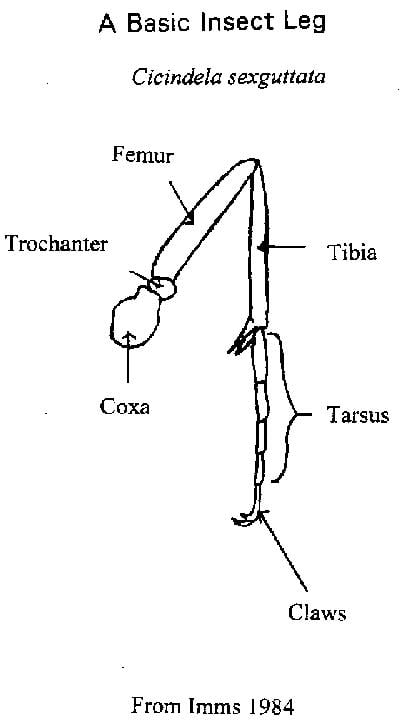
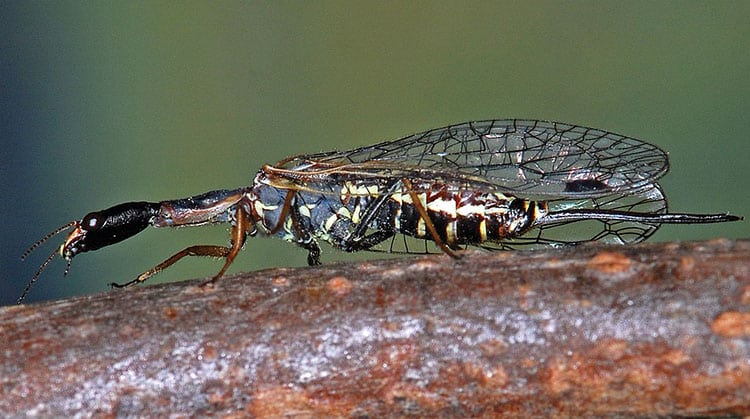
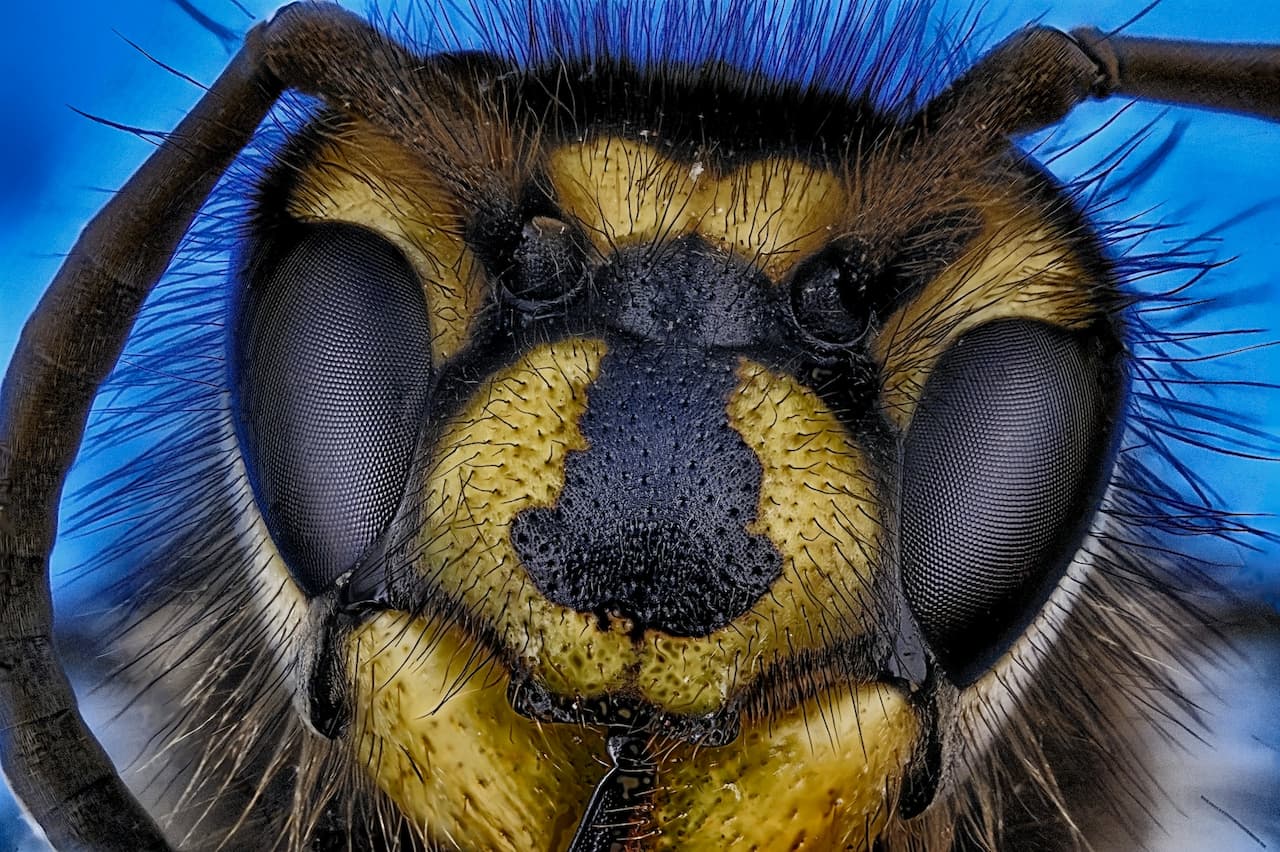
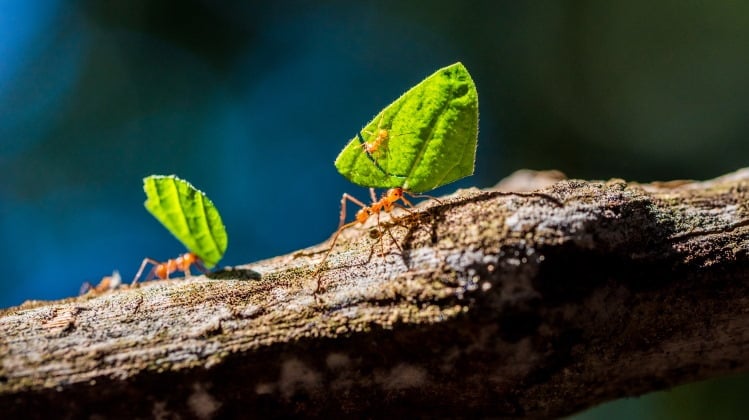

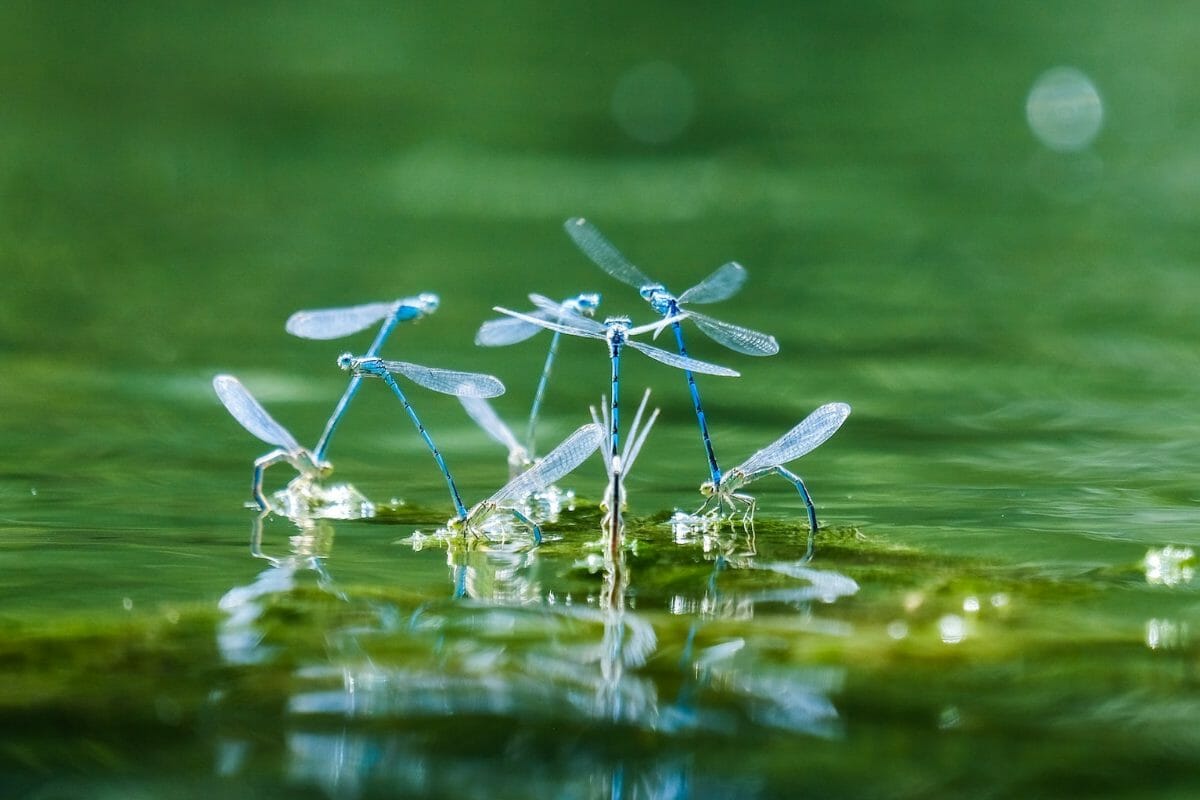
This is detailed and yet very understandable work. Great work
Very interesting thank you. I studied keys like this at University many years ago. Obviously very learned.